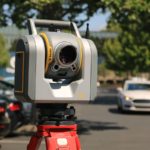 The progress of autonomous vehicle technology has many factors, but one of these is the limitation of lidar to accurately sense objects, which can cause it to fatally mistake important objects for unimportant objects.
The progress of autonomous vehicle technology has many factors, but one of these is the limitation of lidar to accurately sense objects, which can cause it to fatally mistake important objects for unimportant objects.
It’s a problem that the industry is striving to overcome via the use of something known as “frequency modulated continuous wave” (FMCW) technology, which is a form of lidar that can perform high-resolution detection of objects at speed. It’s a technology that has been highlighted in a recent study from Purdue University and the Laboratory of Photonics and Quantum Measurements at École polytechnique fédérale de Lausanne (EPFL).
Fast detection
FMCW lidar works by scanning laser light from the top of the autonomous vehicle, with each laser beam splitting into a comb of wavelengths, which scans the area. Thus, when light bounces off the object, it goes to the detector via an optical isolator or circulator that ensures that all of the reflected light is captured by the detector array.
The method used by the researchers involves acoustic waves to enable the tuning of these various components to be faster, and therefore enable higher-resolution lidar detection of objects. Microelectromechanical systems transducers are integrated into the technology to modulate the microcomb at a range of high frequencies. The system also has an array of transducers, similar to those used in mobile phones to help them discern different cellular bands. This array stirs light at gigahertz frequencies.
“The stirring motion modulates light such that it can only travel in one direction,” the researchers explain. “The tight vertical confinement of the bulk acoustic waves prevents cross-talk and allows for close placement of the actuators.”
Other transducers in the same technology excite an acoustic wave that shakes the chip at megahertz frequencies, demonstrating sub-microsecond control and tuning of the laser pulse microcomb or soliton.
“This achievement, bridging integrated photonics, MEMS engineering and nonlinear optics, represents a new milestone for the emerging chip-based microcomb technology,” the researchers say.
This light modulation technique not only integrates mechanics with optics, but also the fabrication processes involved, making the technology more commercially viable, the researchers said. The MEMS transducers are simply fabricated on top of the silicon nitride photonics wafer with minimal processing.
“As yet unforeseen applications will follow up across multiple communities,” the researchers reveal. “It’s been shown time and again that hybrid systems can obtain advantages and functionality beyond those attained with individual constituents.”
According to the researchers, the new technology could provide the impetus for microcomb applications in power-critical systems such as in space, data centers and portable atomic clocks, or in extreme environments such as those with cryogenic temperatures.
“Our results would not have been possible without this multidisciplinary and intercontinental collaboration,” they conclude.